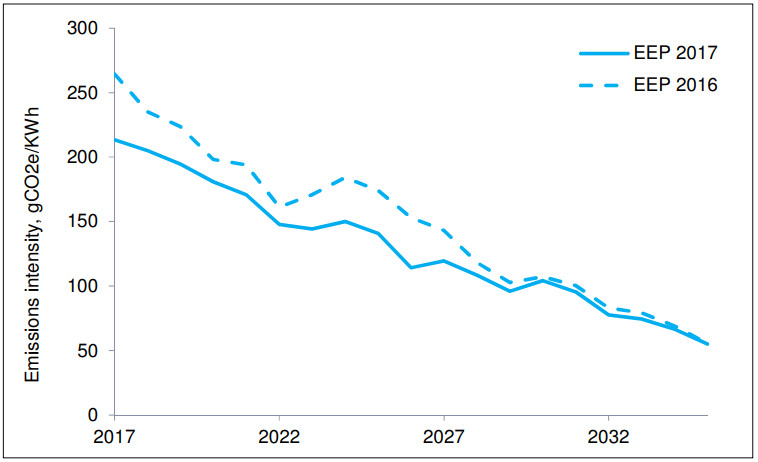Grid carbon emissions fall rapidly
Carbonwatch Calculator for GSHP Heating
The current carbon emissions from different heating systems are shown below in a small Carbonwatch Calculator that updates to the current grid carbon intensity every half hour.
The carbon emissions of heating based on heat transfer are dramatically lower than any heating system based on combustion of carbon compounds.
CO2 Emissions from GSHPs
The Carbonwatch Calculator uses current grid carbon intensity, updated every half hour, to illustrate how much lower carbon emissions are now from ground source energy than from burning fossil fuels for other heating systems.
The CO2 issued by a heat pump powered from green electricity is, of course, zero.
This CO2 Carbowatch Calculator shows the CO2 issued off-site if a ground source heat pump uses grid electricity to transfer heat from the ground.
As the UK National Grid is decarbonising rapidly, the carbon emissions from a heat pump using grid electricity falls each year.
The carbon emissions of heating based on heat transfer using grid electricity are dramatically lower than any heating system based on combustion of carbon compounds.
Whenever the current grid carbon factor is below 215 grams of CO2 per KWh then even direct electric heating emits less carbon from the grid than a gas boiler does on site!
Carbonwatch Calculator for GSHP Heating in nine parts of the UK
The table above shows carbon emissions from different heating mechanism across the UK on average. To see the carbon emissions in each of the countries, or areas, then click on the relevant red label on the right.
Outdated Building Regulations distort CO2 Emissions from heat pumps
The grid carbon factor that is required to be used by Part L of the Building Regulations is 519 gCO2/kWh. This severely overestimates the carbon emissions of a heat pump using grid electricity.
Grid Carbon Intensity
Using DEFRA data, the carbon factor of grid electricity was 495 gCO2/kWh generated in 2014.
In 2015, the equivalent figure was 462, which represents a fall of over 6.5%.
In 2016, the figure was 412, a fall of 10.8%.
For 2017 the Grid Carbon Factor fell to 212 gCO2e/kWh, according to the Energy and Emissions Projections published by BEIS in January 2018.
The BEIS report includes the following graph of its projections of the Grid Carbon Factor in all years up to 2035, together with its projections as they had stood one year earlier (shown in the dotted blue line).


